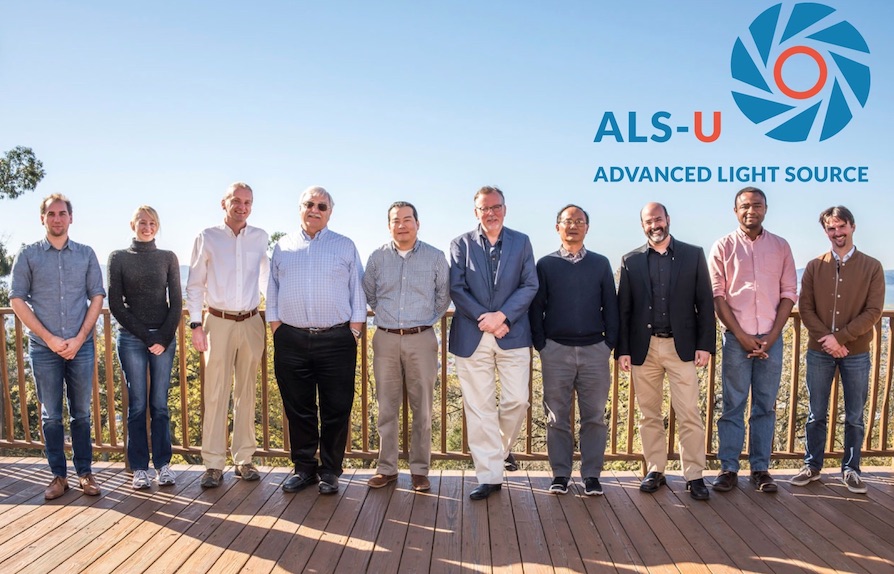
the ALS-U Beamline and Optical Systems group


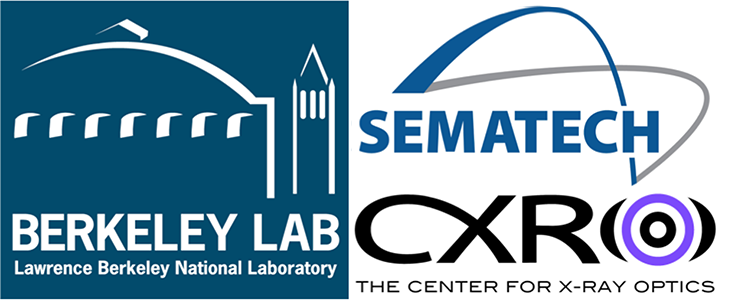
Areas of research
My specialty is extreme light: the light you can't see, but that can help you explore Nature in its finest details.
I am extraordinarily lucky to work with the most dedicated colleagues at Lawrence Berkeley National Lab within the ALS-U Beamline and Optical Systems group.
The primary goal of our research enable diffraction-limited performances of the optics for the upgrade of the Advanced Light Source, a synchrotron light source that produces soft x-ray radiations for the study of physics, material science and biology. The tolerance we have to deal with are quite stringent, with mirrors having sub-nanometer precision in their shape and aberrations that need to stay smallar than a tenth of the wavelength &empash; when the wavelenth is about 1 nanometer (~1250 eV.)

the ALS-U Beamline and Optical Systems group
|
X-ray optics 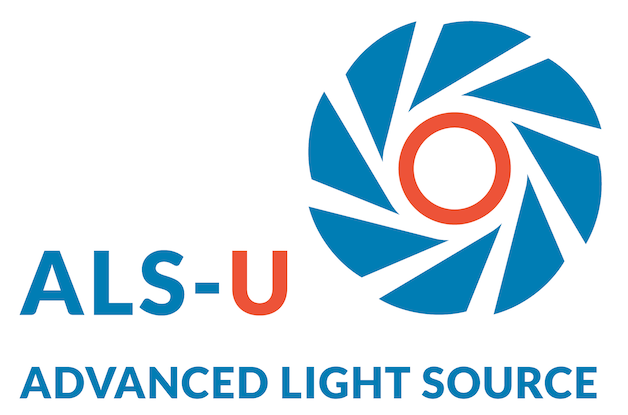
ALS-U is fourth generation synchtrotron light source set to provide ultimate imaging performances. In order to achieve diffraction-limited performances, it is necessary to analyse and monitor the wavefront aberrations imparted by the optics, in order to mitigate the effects of thermal variations using deformable mirrors. |
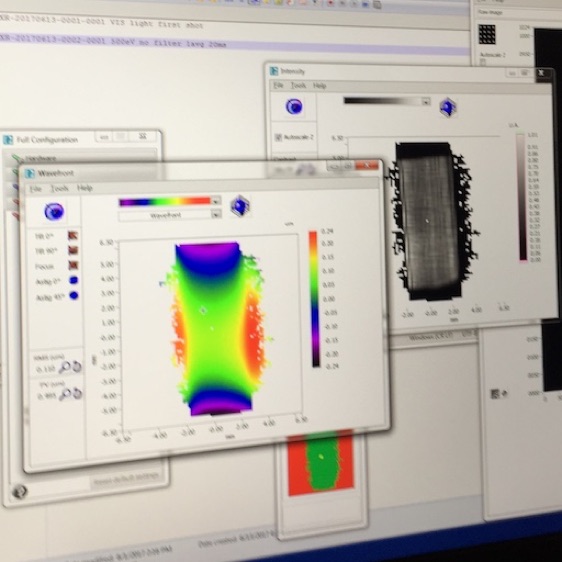 |
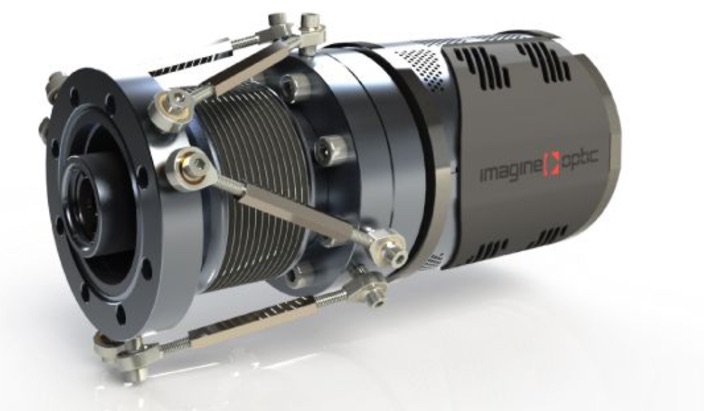
|
|
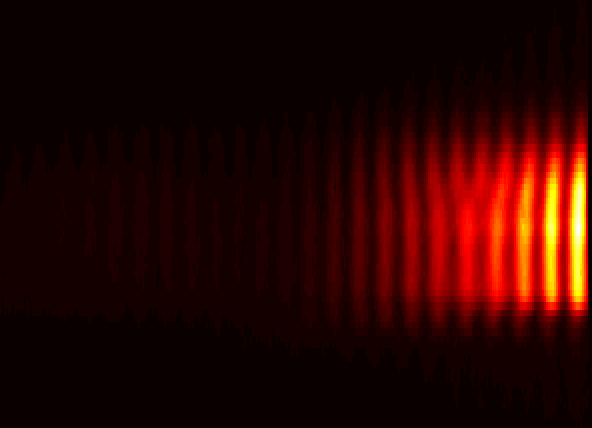
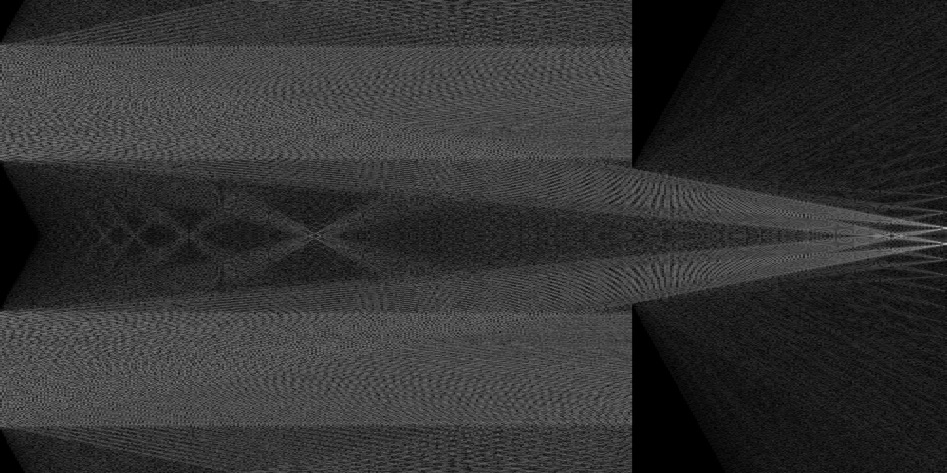
|
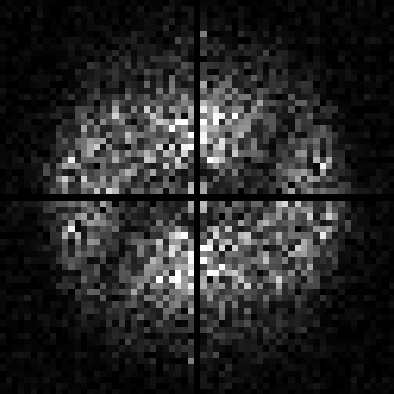
|
Study of novel magnetic properties Emergent effects in magnetic material due to the fine engineering of layers (skyrmions, spin currents) demand novel imaging techniques to characterize them. We are exploring the use of interferences to characterize polarization effects, in order to improve the sensistivity of circular dichroism experiments. |
|
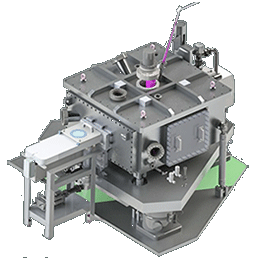
|
EUV Microscopy 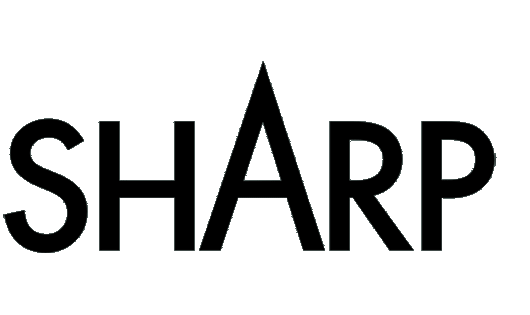
SHARP is en EUV microscope designed to emulate state-of-the-art lithography printing tools.
It is capable exploring minimal dimensions, and demonstrated resolution down to 25nm (6 nm on the wafer).
Imaging at-wavelength is esential to factor out all the physical effects that arise during the formation of an aerial image, like the illumination conditions. |
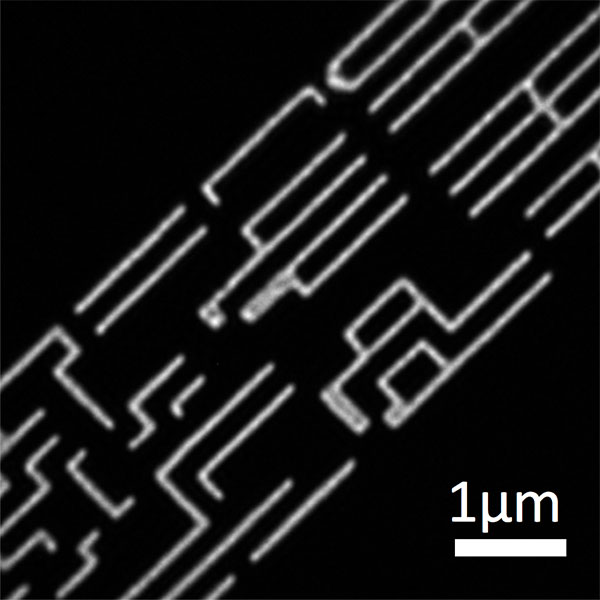 |
|
|
EUV lithography
EUV lithography is the next generation in microchip fabrication. |
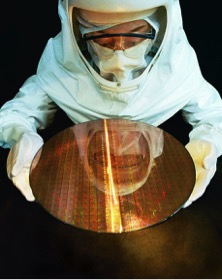
|
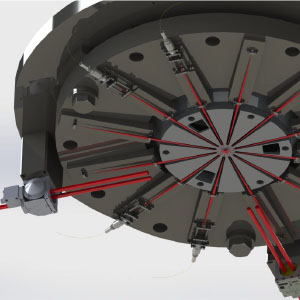 photo credit : (left) Intel - (right) G. Gaines/CXRO |
|
|
Sub-resolution imaging We are developping new techniques increase resolution and extract more information, such as coded aperture imaging that allows to use large area detector to see fine features in a compressed sensing fashion, or Fourier Ptychography Microscopy, that allows to increase the resolution beyond the physical limit, while providing phase information about the object. |
|
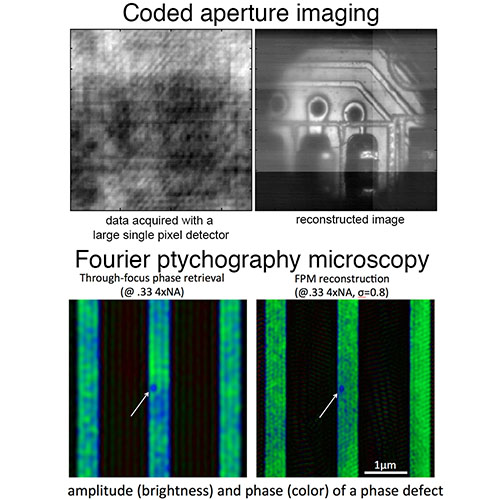
|
|
|
Optical design and metrology
We are developping metrology tools for extreme precision, like optical position sensor with 1 nm precision, or optical testing of mirrors with techniques such as ptychography (scanning coherent diffraction imaging). |
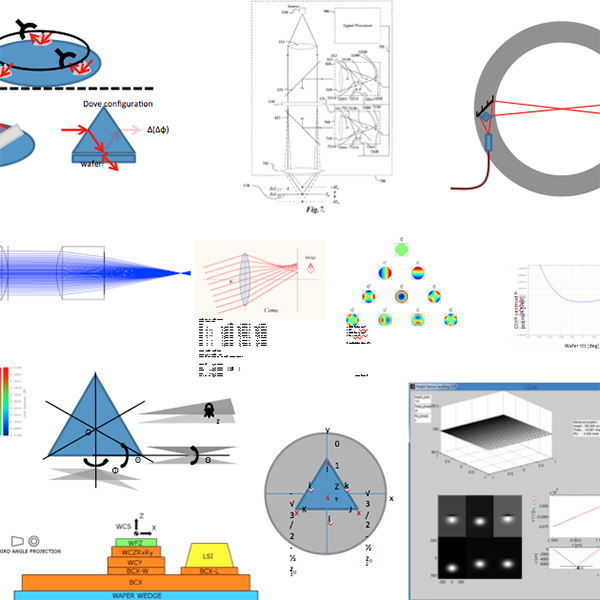
|
|
|
|
Instrument control & simulations Instrument control is key to develop high precision routines. I'm mainly using Matlab to provide interoperability within the scientific community, but I've also used C# to build performant graphical user interfaces. I also run various kind of custom numerical simulations (e.g. diffraction) and signal processing. |
|
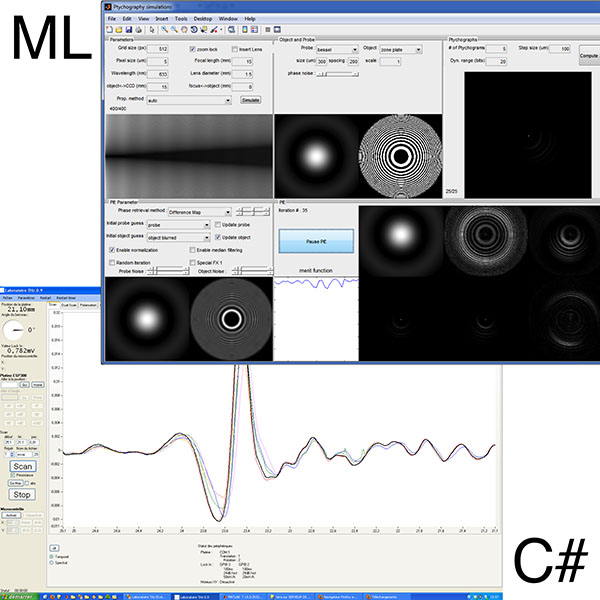
|
|
|
Qualification of systems
Determining the performances of stage and sensors before they are being integrated is crucial to determine error budgets and system tolerances. |
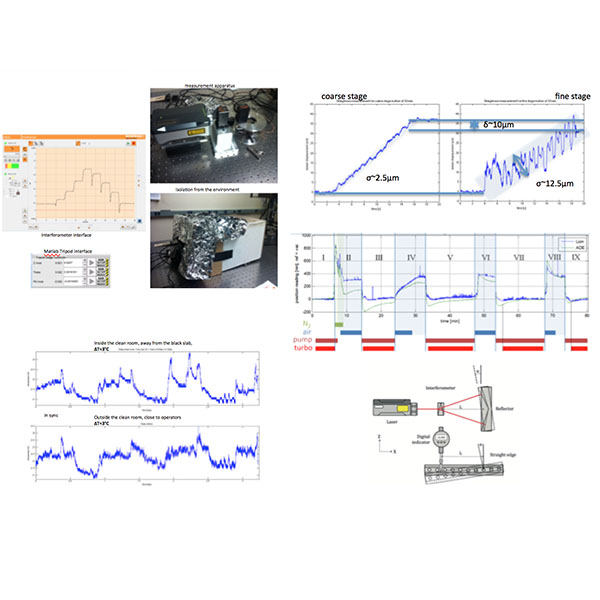
|
|
|
|
Terahertz and ultrafast optics Terahertz radiations cover the part of the electro-magnetic spectrum located between radio-waves and visible light. They share desirable properties with these two domain in terms of interactions with material, but they also allow to perform very fine time analysis of light propagation, bringing new contrasts for imaging such as time of flight. |
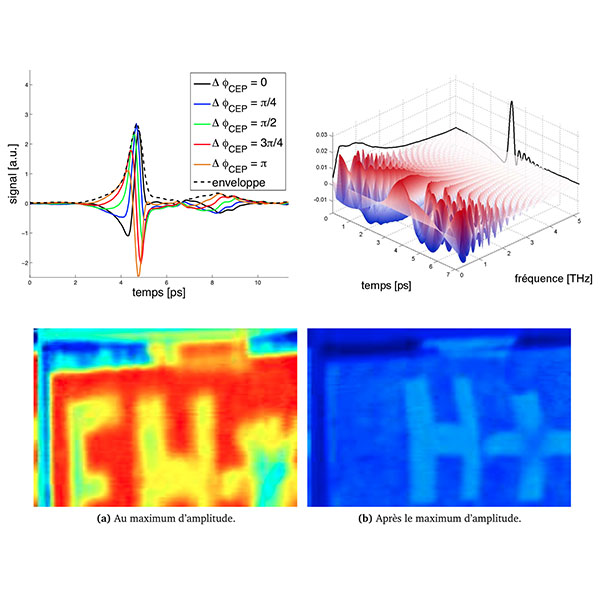
|
|
|
|
Guided optics & silicon
Semiconductors such as silicon are very interesting, since they can be used in various ways to shape the properties of light, such as its polarization, using interfacial effects. |
|
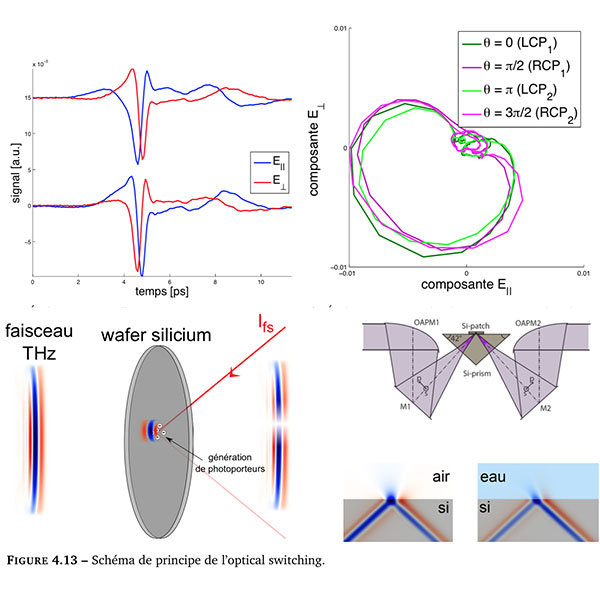
|
|
|
Characterization of materials I've performed many characterization of materials, either using spectroscopy or polarization techniques, sometimes using pump-probe experiment to determine the dynamics of the light-matter interactions. |
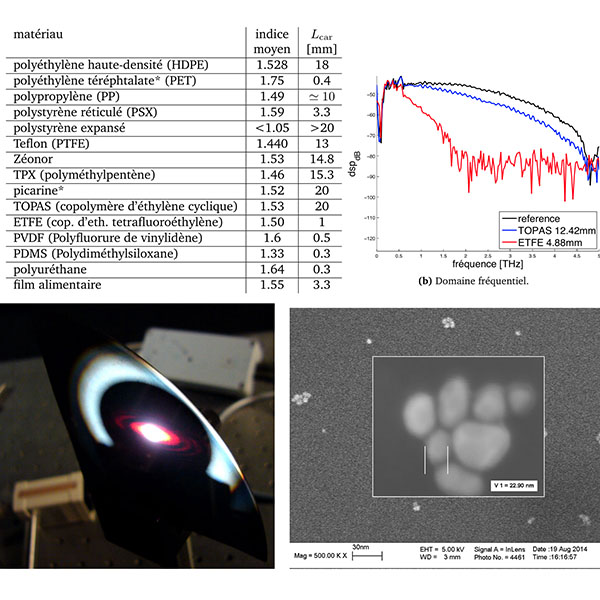
|
|
|
|
Miscellaneous
|
|
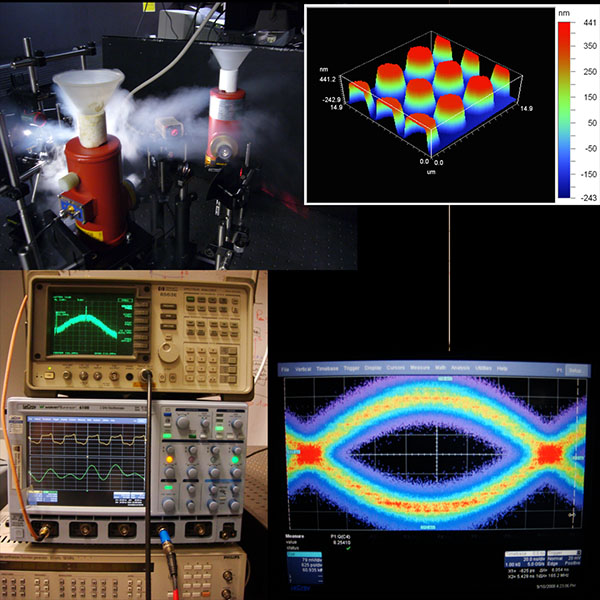
|
You can find my PhD dissertation online - Unfortunately, due to France laws pertaining to education, it had to be written in French.
Lots of cool pictures and universal equations though !

| Title |
Study of the polarization of terahertz waves in the subcycle-regime and application to imaging in biology |
| Summary |
The terahertz domain is a vast yet largely unexplored part of the electromagnetic spectrum, in spite of the virtues conferred by its intermediary situation between radar waves and infrared. Recent technological breakthroughs now allow to generate very short terahertz pulses and to proceed to a time-resolved detection of the associated electric field. The joint determination of phase and amplitude empowers to build new measurement schemes and opens us new possibilities in the processing of collected data. |
You can read the thesis here (in French)
More information here